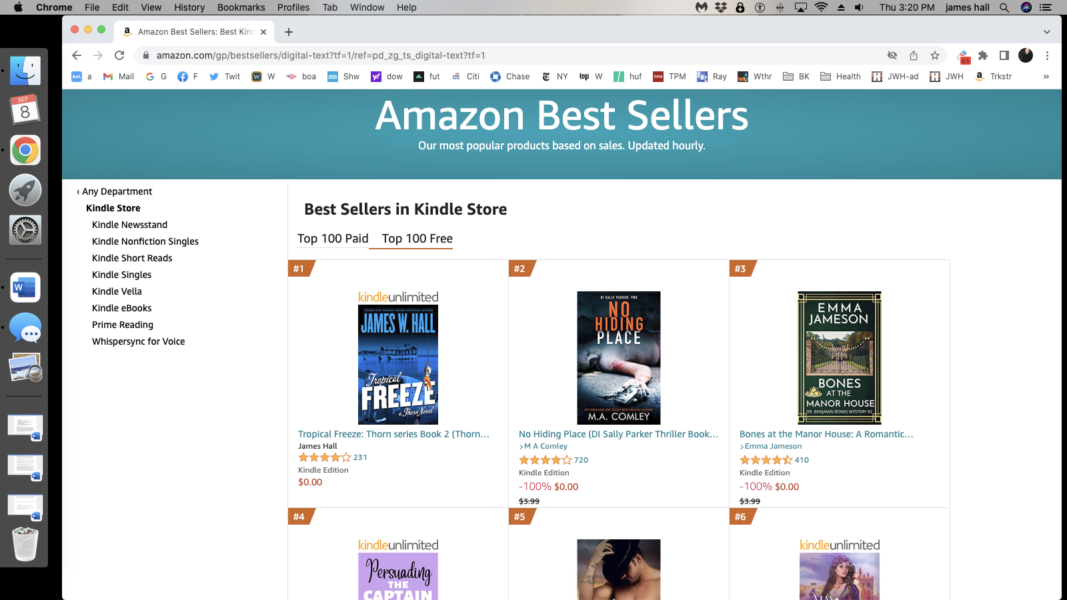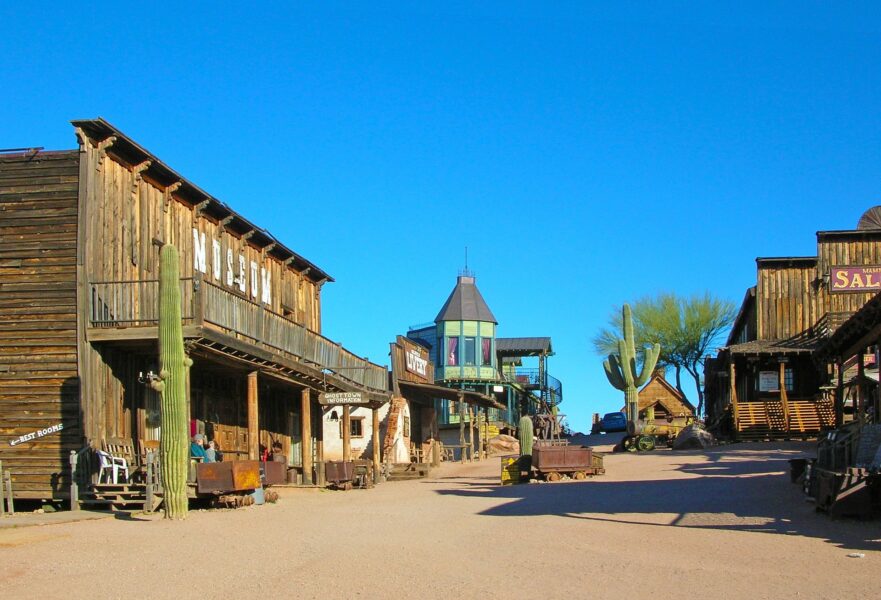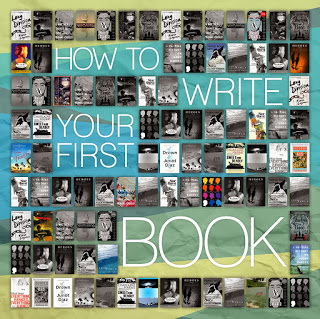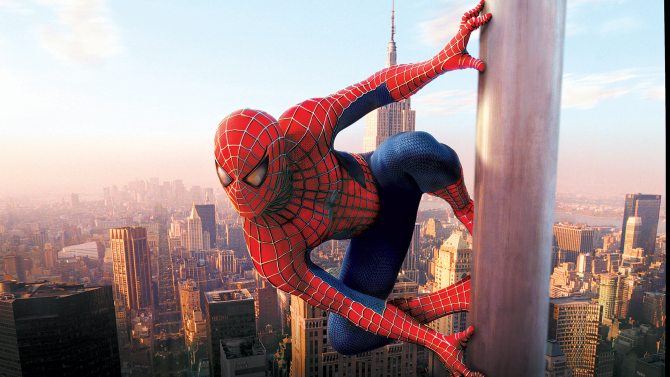
I’ll explain this image in a bit. But please notice that for at least a day or two, Tropical Freeze, my second Thorn novel, topped the Amazon bestseller list. However, it’s only fair to point out that this is the bestseller list of Free Books. Does this call for a celebration? Well, yeah, it does. Hang on, I’ll explain.
For over thirty years my novels and works of non-fiction were published by W.W. Norton, Knopf, Delacorte, St. Martins Press, that is, various traditional publishers. The payment system never varied. My agent negotiated a deal and that arrangement followed a very traditional structure.
Authors are paid 10% of the cover price for each hardback sold, so if the cover price of the book was 20 dollars, I would make 2 dollars on the sale of each hardback. If I was paid 10,000 dollars upfront, I needed to sell 5,000 books to pay back that advance. (It’s more complicated than that, but I’m simplifying.)
It still works that way even though much of the publishing business has changed. These days a lot of readers of traditional hardbacks have migrated to other platforms. Mainly ebooks. And the demographics have changed. The older readers have not been replaced in the same numbers by a new generation of readers. That certainly impacts the bottom lines for publishers and authors.
The fact is, the book business is pretty small. Is now and always has been. It’s always amazed me that publishers are thrilled to sell a few thousand of their 20 dollar items. What other retailer would be happy with those sales figures? 5 thousand shirts? Brooks Brothers wouldn’t stay in business long with those numbers. But in the book business, 5 thousand ain’t bad.
In a recent NY Times article on publishing was this juicy tidbit:
In 2021, fewer than one percent of the 3.2 million titles that BookScan tracked sold more than 5,000 copies.
Since so few books sell more than 5,000 copies, publishers need several major bestsellers to pay for all the other books that break even or lose money. Sadly, though it is their business to know what makes a bestseller, publishers just don’t know. It’s guesswork, a gamble, a gut feeling. But there’s little empirical data to help them decide which books to buy and which to bet heavily on with advertising and other promotional tools. My non-fiction work on fiction bestsellers Hit Lit attempts to wrestle with this issue.
Name recognition is often considered a safe bet to help a book sell millions of copies. James Patterson, Stephen King. Absolutely. But even name recognition often fails. Consider Bridges of Madison County’s author Robert James Waller whose subsequent books never came close to the sales of Bridges. There’s a long list of Wallers. This year’s huge seller is often next year’s flub.
Now Back To Me and that Image at the Opening
When I decided I’d had enough of the traditional publishing world and wanted to learn how to publish my own books in this new ebook Wild West, I was shocked to learn that I could control the price of all my books. If I so chose I could change the price daily, even hourly. Though I can’t imagine why I would do that. I was also more than shocked to learn that I could receive 70% royalties (from Amazon) on all my novels.
So if I set the price of a book at 4 dollars, I can make 2.80. Or 80 cents more than I could make on selling a 20 dollar hardback at ten percent. And if I raise the price by just a tiny bit, at the risk of losing some bargain hunting readers, I could clear even more. 5 dollar book equals 3.50 profit.
Returning to that image at the top of this post, I have to explain one of the weirdest discoveries I’ve made in the world of self-publishing. It’s called BookBub.
https://www.bookbub.com/welcome
BookBub offers its members free or deeply discounted books of all kinds.
Authors have to apply to “win” a BookBub Featured Deal. Only 20% of those who apply get a Featured Deal. I’ve been rejected numerous times. But when one of my novels has been accepted here’s what happens. First, I have to pay the good folks at BookBub a few hundred dollars (650 is not unusual), and for that sum they will promote that particular book to their several million eager readers. Readers who are eager to get a great deal.
Usually that deal means my book that normally sells for 3.99 is offered for free for four or five days. Yes, that’s right. I pay them $650 and they give my book away for free.
When I first heard about this system, I said, yeah, right. Sure I’m going to do that. Like hell I am.
But I was assured by other Indie writers that it was definitely worth it. The ROI (return on investment) would be huge. I’d make back that initial $650 and plenty more. Skeptical as hell, I went on and applied, got rejected several times, then finally got one accepted. I think it was Under Cover of Daylight, the first novel featuring Thorn.
I had to change the price on Amazon from 3.99 to Free for four days. BookBub sent out emails to their millions and voila: Under Cover was downloaded and downloaded and downloaded. 45 thousand people got a free book. And then some of those forty-five thousand liked it enough to buy another book in the series, and some liked it so much they bought two or three or four books in the series. And some of those readers have hung around and bought the latest novels. A very good ROI.
So here’s the head’s up: Mark your calendars. On October 13, 14, 15 and 16 Bad Axe (Thorn #15) will be free on Amazon. You don’t have to join BookBub to download the book for free from Amazon, but I’d suggest doing it anyway if you like free stuff.
So as you can see , this Wild West Indie publishing thing is very strange. But honestly, I’m having a blast.



